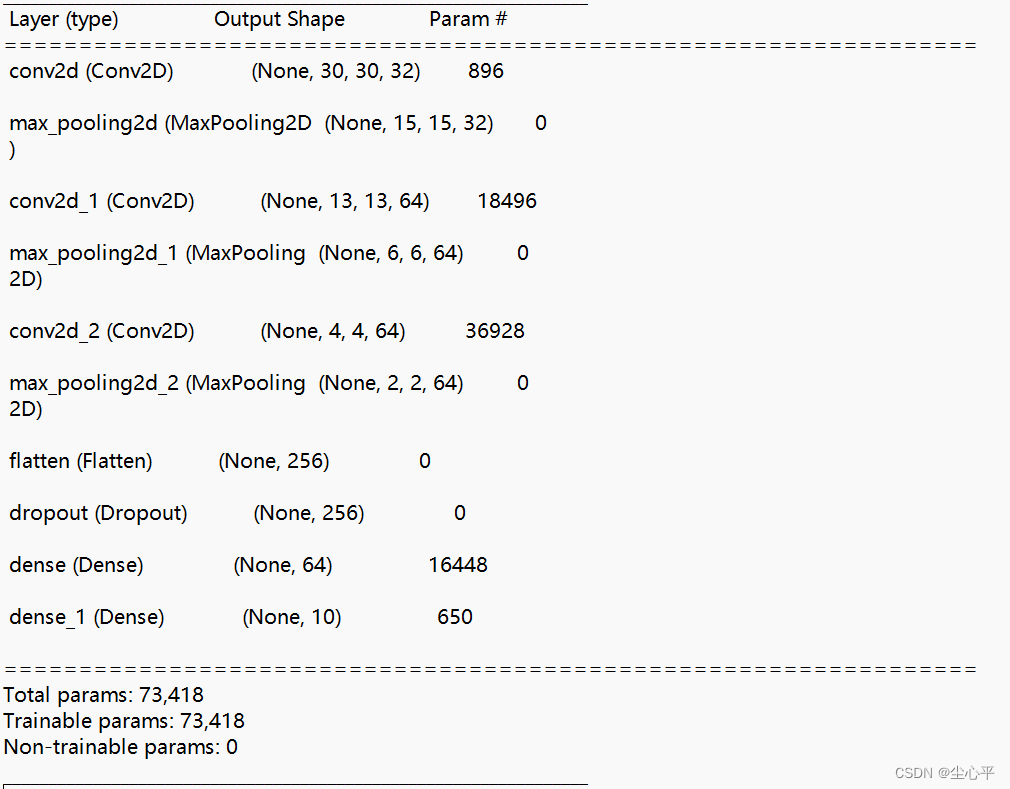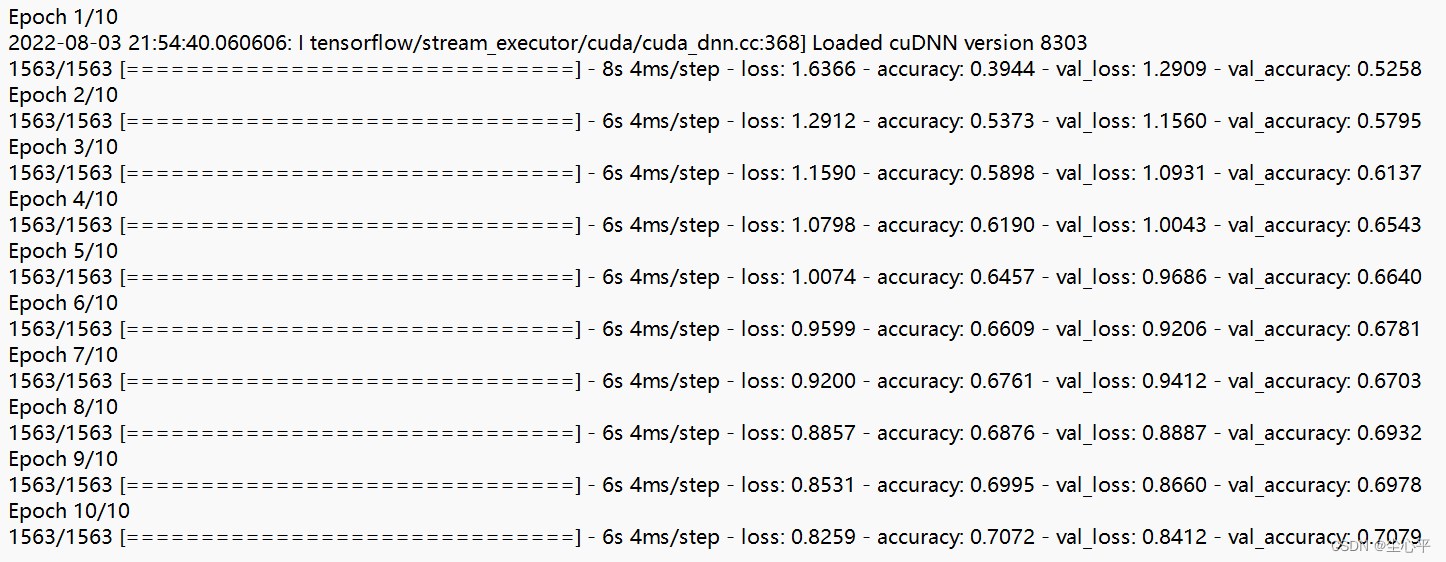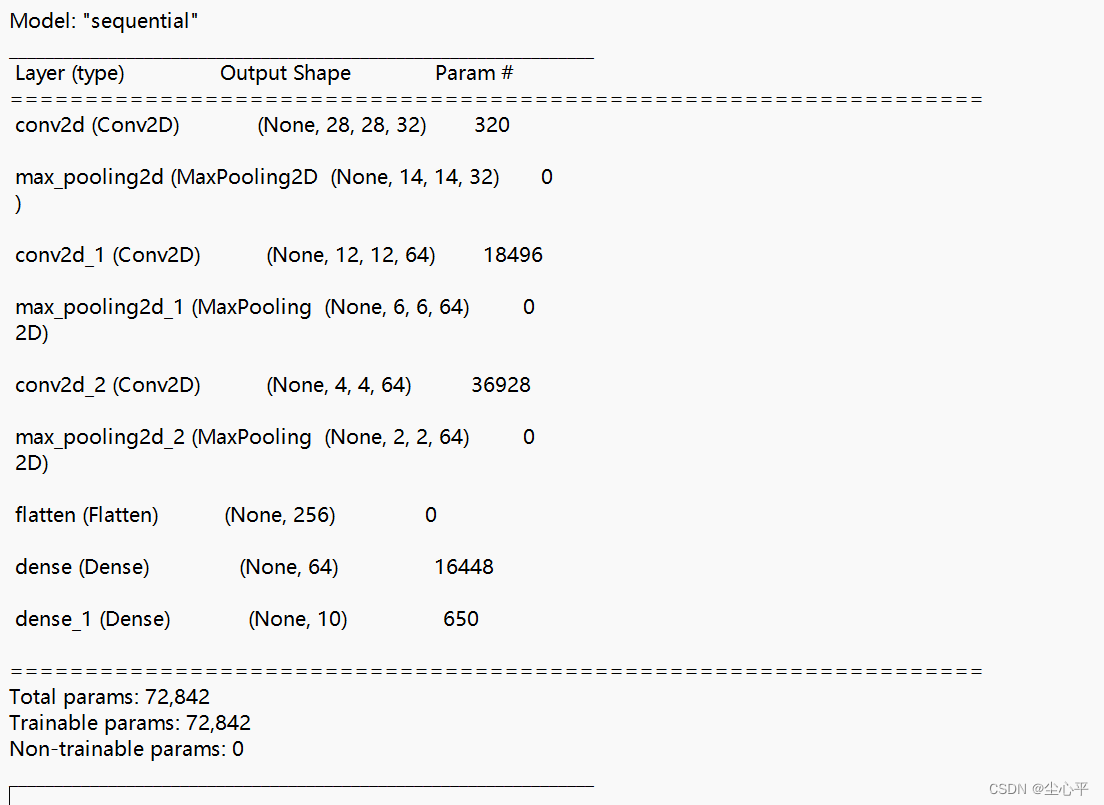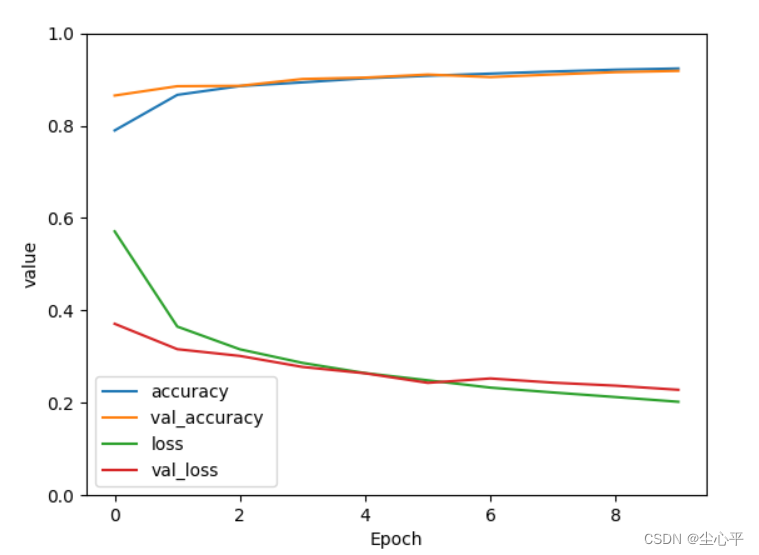当前位置:网站首页>深度学习——以CNN服装图像分类为例,探讨怎样评价神经网络模型
深度学习——以CNN服装图像分类为例,探讨怎样评价神经网络模型
2022-08-04 03:09:00 【尘心平】
活动地址:CSDN21天学习挑战赛
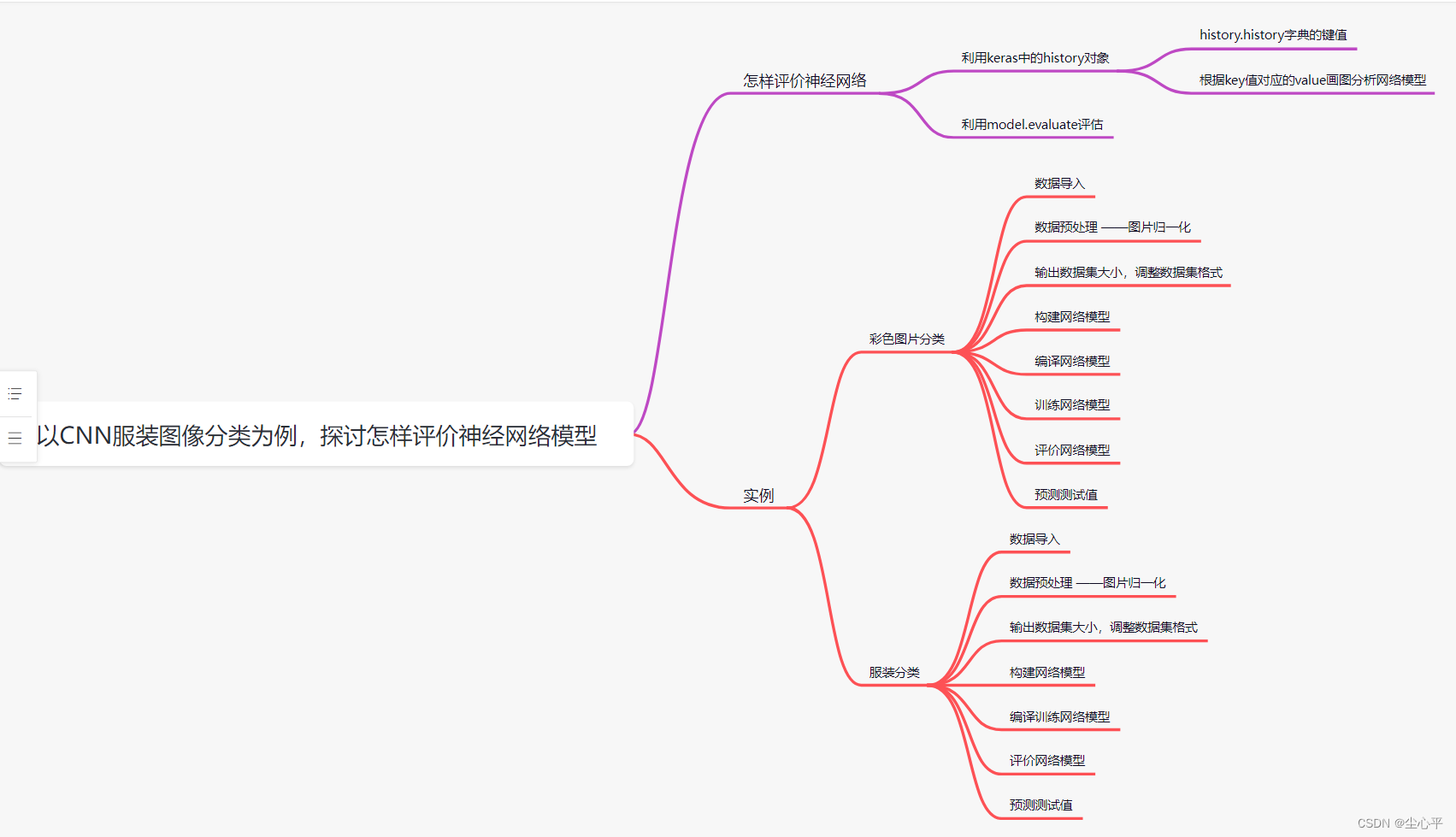 目录
目录
怎样评价神经网络
利用keras中的history对象
keras中的类History对象有两个属性 history 和 epoch
history.epoch返回一个列表,列表的值是 0 ~ 训练时指定的epoch
history.history返回一个字典,字典有4个键值key,分别是accuracy、val_accuracy、loss和val_loss,每个key的value均是一个列表,列表的长度=history.epoch的长度=模型训练时指定的epoch数
这里我们用到的主要是history.history的4个键值,下面详细介绍
history.history字典的键值
首先我们来介绍一下训练集train_set和测试集test_set (实际上还有一个用的不多的验证集validation set)
训练集是参与网络模型训练的数据集
测试集是对网络模型的性能进行评估的数据集,一般不参与网络模型的训练
验证集是用来用来调整网络超参数的数据集(用的不多)
一般来说整个数据集中训练集和测试集的比例是7:3,有验证集时的比例是6:2:2
accuracy和loss均是描述训练集的
- accuracy是每轮训练,训练集的准确度
- loss是每轮训练,训练集的损失程度
val_accuracy和val_loss均是描述验证集的
但验证集一般不怎么用,一般是用测试集代替验证集,所以才有了训练模型fit函数内的validation_data参数传的是测试集,故这两个对象代表的也可以是测试集
- val_accuracy是每轮训练,验证集的准确度
- val_loss是每轮训练,验证集的损失程度
根据key值对应的value画图分析网络模型
这4个键对应的值恰好是每次训练得到的loss、accuracy、val_loss、val_accuracy,如下图
每轮训练得到的loss、accuracy、val_loss、val_accuracy是通过编译网络模型时指定的计算方法计算的:
可以利用 matplotlib.pyplot 库绘画出这4条线的变化,具体代码如下:
plt.plot(history.history['accuracy'], label='accuracy') # 训练集准确度 plt.plot(history.history['val_accuracy'], label='val_accuracy ') # 验证集准确度 plt.plot(history.history['loss'], label='loss') # 训练集损失程度 plt.plot(history.history['val_loss'], label='val_loss') # 验证集损失程度 plt.xlabel('Epoch') # 训练轮数 plt.ylabel('value') # 值 plt.ylim([0, 1]) # y轴表示范围 plt.legend(loc='lower left') # 图例位置 plt.show()下面是示例图:
由折线整体变化趋势分析
loss val_loss
网络情况 逐渐下降 逐渐下降 网络模型训练正常,这是最好的情况。
逐渐下降 趋于不变/逐渐上升 网络过拟合。
过拟合是指网络模型能够较好的表示训练集的数据,但是泛化能力较差,对于其他同种的数据集(比如测试集)效果很差
比如下图,模型训练出来是红线,与训练集实际数据误差和很小,
蓝线是另一种拟合曲线,相比误差较大
来自知乎 过拟合(overfitting)与解决办法 但是,对于一些非训练集的数据,可能会存在下图的情况
过拟合主要是 数据集较少或者模型较复杂引起的
解决方法有:
- 增加数据集数据:
(1)插值法增加数据
(2)手动拍摄等方法创造数据
(3)对已有数据集作旋转、切割等处理增加数据集
- 简化模型复杂度:尽量能够用物理数学建模确定复杂度
(1)减少神经网络的特征提取层数,例如CNN神经网络减少卷积层数
(2)减少模型的训练轮数,提前在合适的位置停止训练
(3)正则化:惩罚力度
可以施加在权重、输出、偏置参数上,这里介绍施加在权重上的
通常采用的方法有L1,L2两种
L1:
L2:
代码实现:
# 可以在Dense、Conv2D函数中 加kernel_regularizer正则化器参数 layers.Conv2D(32, (3, 3), activation='relu', input_shape=(28, 28, 1),kernel_regularizer=0.01) layers.Dense(64, activation='relu',kernel_regularizer=0.01)(4)Drop-out:在训练阶段,每次训练随机选择一部分神经元不使用,减少复杂度。
实现:在Flattern层后加Drop-out层设置灭活比
layers.Dropout(rate=.数字) # 0~1 1会报错趋于不变 逐渐下降 数据集有严重问题,建议重新选择数据集。一般不会出现这种情况。
趋于不变 趋于不变 根据数据集大小有以下两种情况:
如果数据集规模较大,代表学习过程遇到瓶颈,需要减小学习率。其次考虑修改 batchsize 大小,在input_shape中修改
data_format=channels_last默认传(batchsize一般不设置,height,width,channles)。
如果数据集很规模较小,训练稳定,不做修改。
逐渐上升 逐渐上升 可能是网络结构设计、训练参数、数据集等的问题。这种情况属于训练过程中最差情况,得一个一个排除问题。
利用model.evaluate评估
该函数会接受测试集数据,输出测试集的loss和accuray值(accuracy只有compile时指定metrics才会有)
实例
彩色图片分类
数据导入
import tensorflow as tf from keras import datasets, models, layers # keras import matplotlib.pyplot as plt #导入数据集 (train_images, train_labels), (test_images, test_labels) =tf.keras.datasets.cifar10.load_data() # datasets内部集成了彩色图片数据集,
数据预处理 ——图片归一化
# 归一化 # 将像素的值标准化至0到1的区间内,rgb像素值 0~255 0为黑 1为白 train_images, test_images = train_images / 255.0, test_images / 255.0
输出数据集大小,调整数据集格式
print(train_images.size) # 153600000 print(test_images.size) # 30720000 # 换算 # 彩色说明3通道 32*32的图片 train_images = train_images.reshape((-1, 32, 32, 3)) test_images = test_images.reshape((-1, 32, 32, 3))
构建网络模型
经过多次测试,从两层卷积池化到三层卷积池化到两次卷积池化+Dropout到三层卷积池化Dropout,多次评价模型,最好的情况是在三层卷积池化+Dropout(0.3)
代码如下:
# 构建CNN网络模型 model = models.Sequential([ # 采用Sequential 顺序模型 layers.Conv2D(32, (3, 3), activation='relu', input_shape=(32, 32, 3)), # 卷积层1,卷积核个数32,卷积核3*3*3 relu激活去除负值保留正值,输入是32*32*3 layers.MaxPooling2D((2, 2)), # 池化层1,2*2采样 layers.Conv2D(64, (3, 3), activation='relu'), # 卷积层2,卷积核64个,卷积核3*3*3,relu激活去除负值保留正值 layers.MaxPooling2D((2, 2)), # 池化层2,2*2采样 layers.Conv2D(64, (3, 3), activation='relu'), # 卷积层2,卷积核64个,卷积核3*3*3,relu激活去除负值保留正值 layers.MaxPooling2D((2, 2)), # 池化层2,2*2采样 layers.Flatten(), # Flatten层,连接卷积层与全连接层 layers.Dropout(0.3),# 设置Dropout层 layers.Dense(64, activation='relu'), # 全连接层,64张特征图,特征进一步提取 layers.Dense(10) # 输出层,输出预期结果 ]) # 打印网络结构 model.summary()
编译网络模型
# 编译 model.compile(optimizer='adam', # 优化器 loss=tf.keras.losses.SparseCategoricalCrossentropy(from_logits=True), # 设置损失函数from_logits: 为True时,会将y_pred转化为概率 metrics=['accuracy'])
训练网络模型
# 训练 # epochs为训练轮数 history = model.fit(train_images, train_labels, epochs=10, validation_data=(test_images, test_labels))
评价网络模型
绘制loss、val_loss、accuracy、val_accuracy折线图
# 评价 plt.plot(history.history['accuracy'], label='accuracy') # 精确度 plt.plot(history.history['val_accuracy'], label='val_accuracy ') plt.plot(history.history['loss'], label='loss') plt.plot(history.history['val_loss'], label='val_loss') plt.xlabel('Epoch') # 循环次数 plt.ylabel('value') plt.ylim([0, 1.5]) plt.legend(loc='lower right') plt.show() test_loss, test_acc = model.evaluate(test_images, test_labels, verbose=1) # loss函数的值和 metrics值 # 输入数据和标签,输出损失值和选定的指标值(如精确度accuracy) print(test_loss, test_acc) # 313/313 [==============================] - 1s 2ms/step - loss: 0.8412 - accuracy: 0.7079 # 0.8412009477615356 0.7078999876976013
val_loss与loss均逐渐下降,属于最好的情况
预测测试值
# 绘制测试集图片 class_names = ['airplane', 'automobile', 'bird', 'cat', 'deer', 'dog', 'frog', 'horse', 'ship', 'truck'] plt.figure(figsize=(20, 10)) # 这里只看20张,实际上并不需要可视化图片这一步骤 for i in range(20): plt.subplot(5, 10, i + 1) plt.xticks([]) plt.yticks([]) plt.grid(False) plt.imshow(test_images[i], cmap=plt.cm.binary) plt.xlabel(class_names[test_labels[i][0]]) plt.show() # 预测 pre = model.predict(test_images) # 对所有测试图片进行预测 for x in range(5): print(pre[x]) for x in range(5): print(class_names[np.array(pre[x]).argmax()])
运行输出
得到结论是相符合
服装分类
数据导入
# 导入数据集 (train_images, train_labels), (test_images, test_labels) = tf.keras.datasets.fashion_mnist.load_data() # datasets内部集成了MNIST数据集
数据预处理——图像归一化
# 归一化 # 将像素的值标准化至0到1的区间内,rgb像素值 0~255 0为黑 1为白 train_images, test_images = train_images / 255.0, test_images / 255.0
数据格式调整
# 这里图片的格式是28*28,通道数为1 train_images = train_images.reshape((-1, 28, 28, 1)) test_images = test_images.reshape((-1, 28, 28, 1))
构建网络模型
这里采用了边缘填充0,3层卷积池化
# 构建CNN网络模型 model = models.Sequential([ # 采用Sequential 顺序模型 layers.Conv2D(32, (3, 3), activation='relu', input_shape=(28, 28, 1),padding='same'), # 卷积层1,卷积核个数32,卷积核3*3*1 relu激活去除负值保留正值,输入是28*28*1 layers.MaxPooling2D((2, 2)), # 池化层1,2*2采样 layers.Conv2D(64, (3, 3), activation='relu'), # 卷积层2,卷积核64个,卷积核3*3,relu激活去除负值保留正值 layers.MaxPooling2D((2, 2)), # 池化层2,2*2采样 layers.Conv2D(64, (3, 3), activation='relu'), # 卷积层3,卷积核64个,卷积核3*3,relu激活去除负值保留正值 layers.MaxPooling2D((2, 2)), # 池化层2,2*2采样 layers.Flatten(), # Flatten层,连接卷积层与全连接层 layers.Dropout(0.3), layers.Dense(64, activation='relu'), # 全连接层,64张特征图,特征进一步提取 layers.Dense(10) # 输出层,输出预期结果 ]) # 打印网络结构 model.summary()
编译训练网络模型
# 编译 model.compile(optimizer='adam', # 优化器 loss=tf.keras.losses.SparseCategoricalCrossentropy(from_logits=True), # 设置损失函数from_logits: 为True时,会将y_pred转化为概率 metrics=['accuracy']) # 训练 # epochs为训练轮数 history = model.fit(train_images, train_labels, epochs=10, validation_data=(test_images, test_labels))
评价网络模型
# 评价 plt.plot(history.history['accuracy'], label='accuracy') # 训练集准确度 plt.plot(history.history['val_accuracy'], label='val_accuracy ') # 验证集准确度 plt.plot(history.history['loss'], label='loss') # 训练集损失程度 plt.plot(history.history['val_loss'], label='val_loss') # 验证集损失程度 plt.xlabel('Epoch') # 训练轮数 plt.ylabel('value') # 值 plt.ylim([0, 1]) plt.legend(loc='lower left') # 图例位置 plt.show() test_loss, test_acc = model.evaluate(test_images, test_labels, verbose=1) # loss函数的值和 metrics值 # 输入数据和标签,输出损失值和选定的指标值(如精确度accuracy) print(test_loss, test_acc)
观察得到,loss和val_loss均逐渐下降,是最好的情况
预测测试集
# 绘制测试集图片 class_names = ['T-shirt/top', 'Trouser', 'Pullover', 'Dress', 'Coat', 'Sandal', 'Shirt', 'Sneaker', 'Bag', 'Ankle boot'] plt.figure(figsize=(20, 10)) # 这里只看20张,实际上并不需要可视化图片这一步骤 for i in range(20): plt.subplot(5, 10, i + 1) plt.xticks([]) plt.yticks([]) plt.grid(False) plt.imshow(test_images[i], cmap=plt.cm.binary) plt.xlabel(class_names[test_labels[i]]) plt.show() # 预测 pre = model.predict(test_images) # 对所有测试图片进行预测 for x in range(5): print(pre[x]) for x in range(5): print(class_names[np.array(pre[x]).argmax()])
边栏推荐
- pytorch applied to MNIST handwritten font recognition
- 一文看懂推荐系统:召回04:离散特征处理,one-hot编码和embedding特征嵌入
- 机器学习模型的“可解释性”
- STM8S项目创建(STVD创建)---使用 COSMIC 创建 C 语言项目
- Based on the statistical QDirStat Qt directory
- QNX Hypervisor] 10.2 vdev 8259 2.2 user manual
- 复制带随机指针的链表
- 基地址:环境变量
- 自定义通用分页标签01
- In the season of going overseas, the localization of Internet tips for going overseas
猜你喜欢
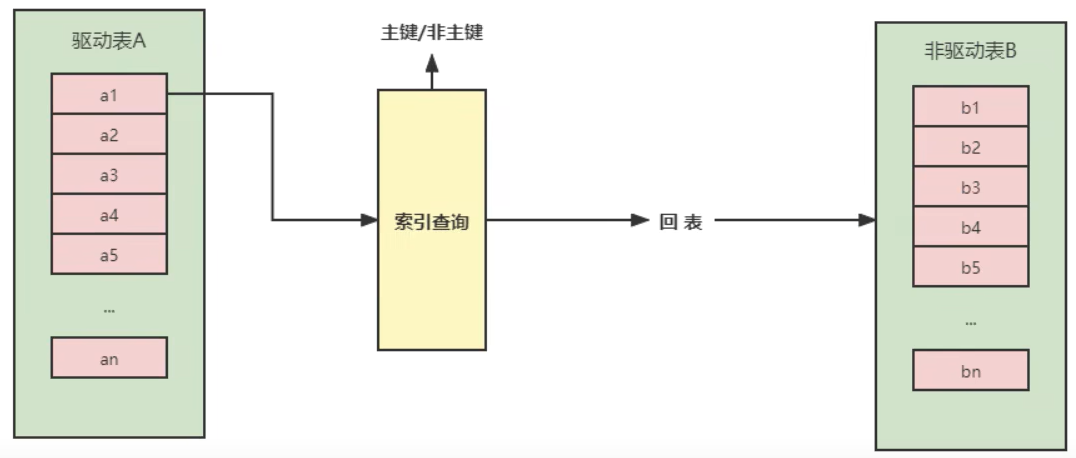
MySQL query optimization and tuning
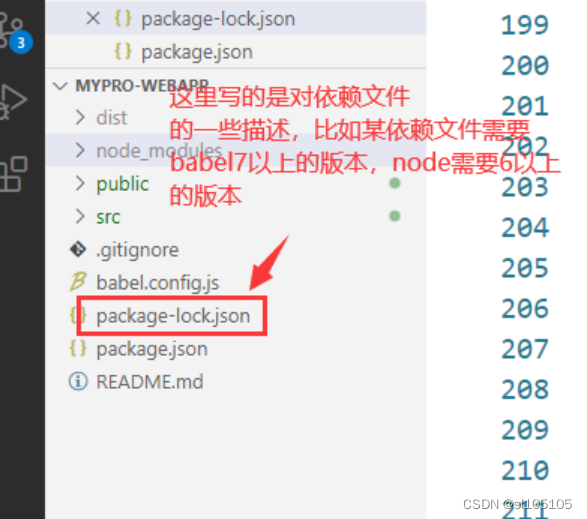
Detailed analysis of scaffolding content
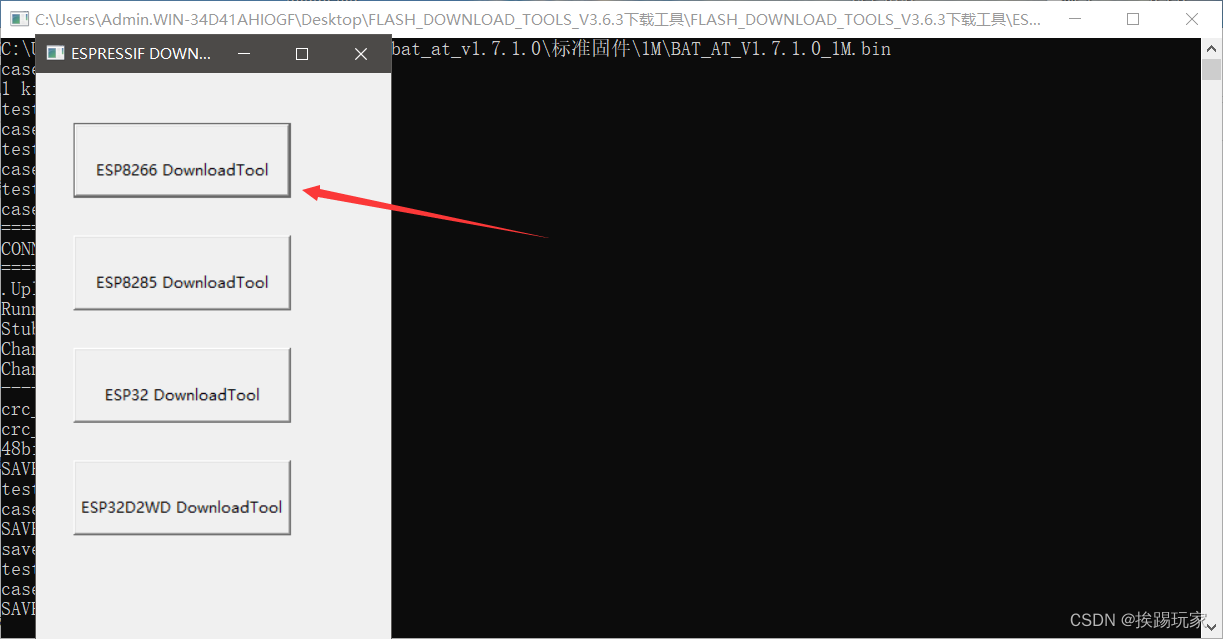
Brush esp8266-01 s firmware steps
![[Study Notes Dish Dog Learning C] Dynamic Memory Management](/img/57/a1837e5eec2af0e684e5895a8afed0.png)
[Study Notes Dish Dog Learning C] Dynamic Memory Management
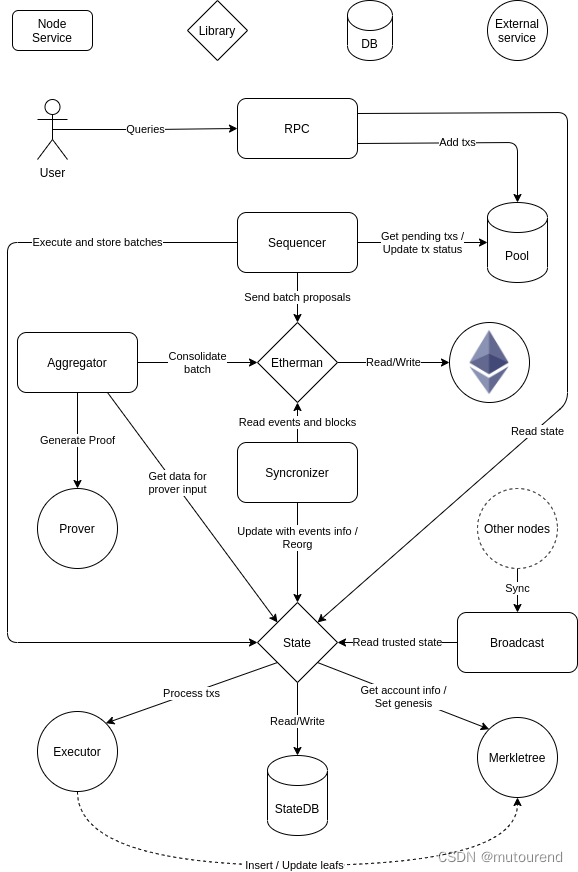
Polygon zkEVM网络节点
The general SQL injection flow (sample attached)
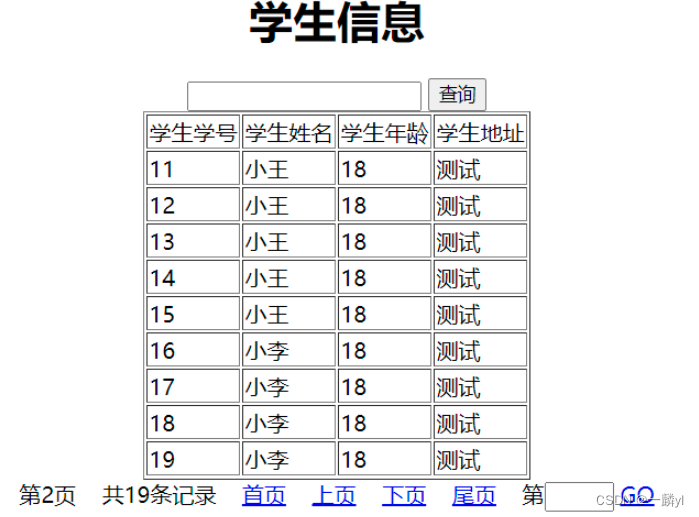
自定义通用分页标签02
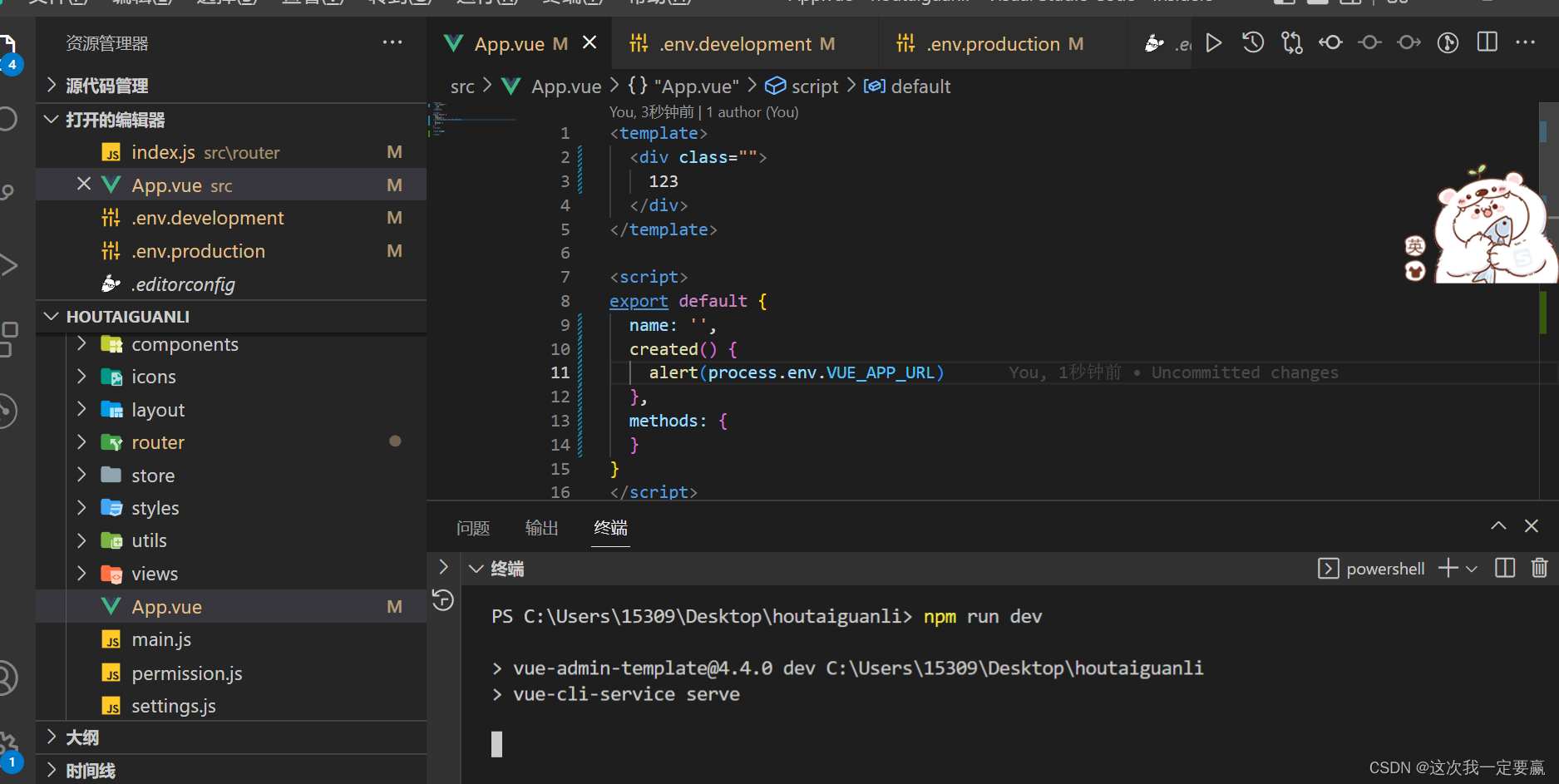
base address: environment variable
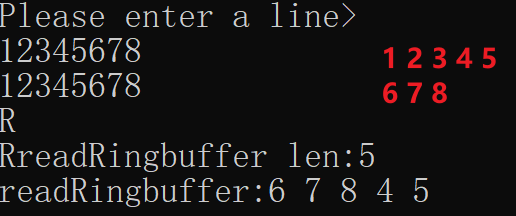
C language -- ring buffer
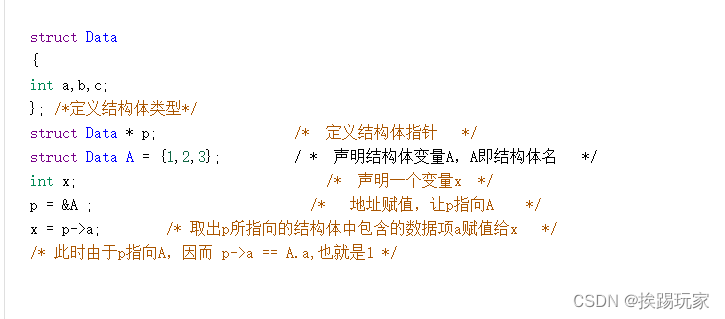
单片机C语言->的用法,和意思
随机推荐
golang中的unsafe.Pointer,指针,引用
架构实战营模块三作业
Detailed analysis of scaffolding content
SSLHandshakeException: No appropriate protocol (protocol is disabled or cipher suites are inappropri
如何在MySQL中的数据库下删除所有的表
打造一份优雅的简历
C语言--环形缓存区
Countdown to 2 days, the "New Infrastructure of Cultural Digital Strategy and Ecological Construction of Cultural Art Chain" will kick off soon
系统太多,多账号互通如何实现?
unsafe.Pointer, pointer, reference in golang
2022支付宝C2C现金红包PHP源码DEMO/兼容苹果/安卓浏览器和扫码形式
View mysql deadlock syntax
十一种概率分布
Power button (LeetCode) 215. The first K largest elements in the array (2022.08.03)
【Playwright测试教程】5分钟上手
自制蓝牙手机app控制stm8/stm32/C51板载LED
出海季,互联网出海锦囊之本地化
typescript type 和 interface 的区别
自定义通用分页标签02
Deep Learning (3) Classification Theory Part



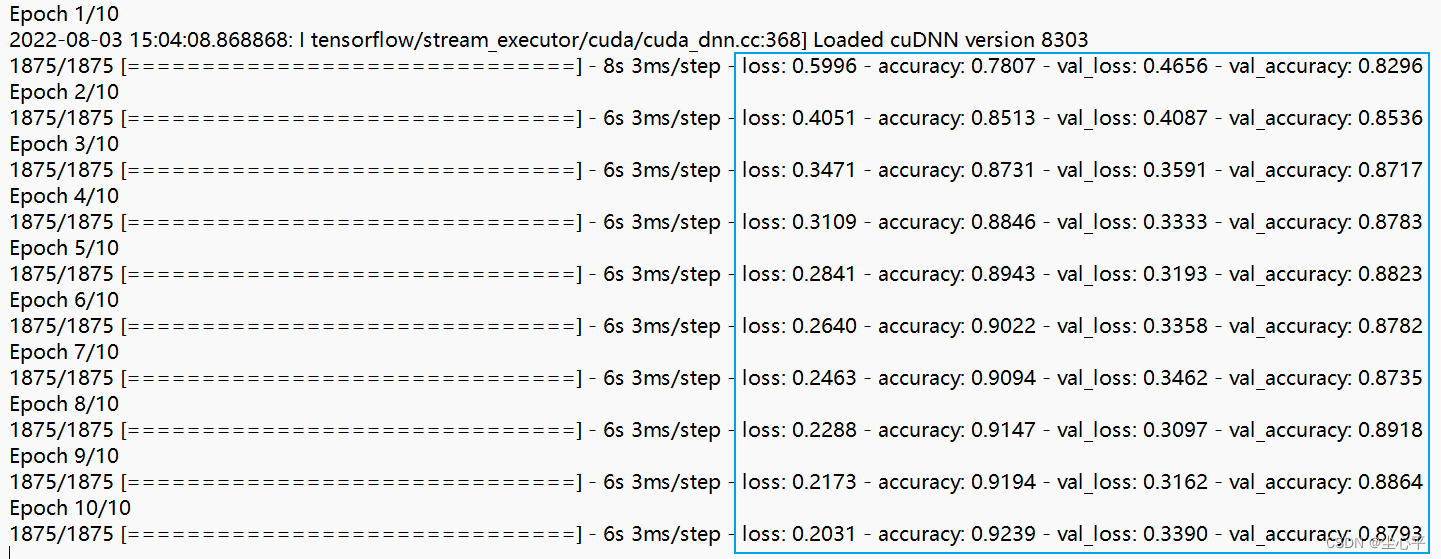

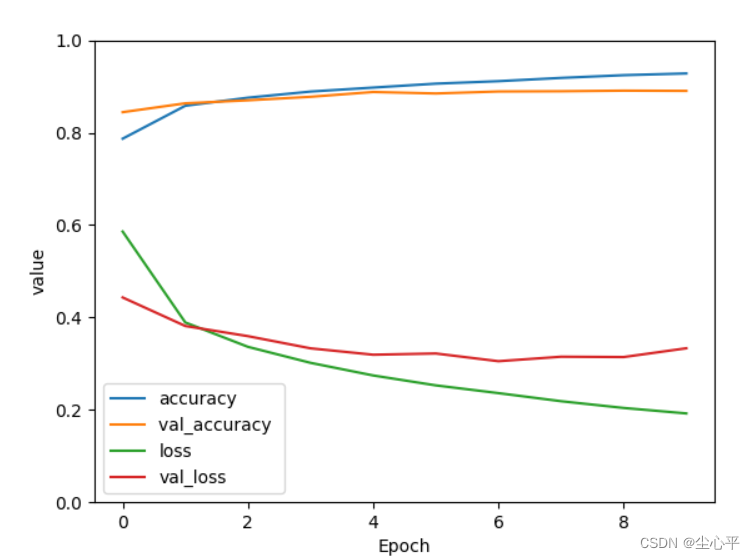
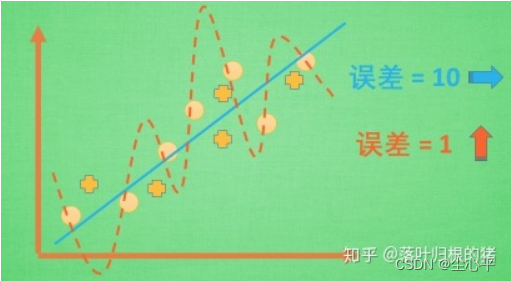
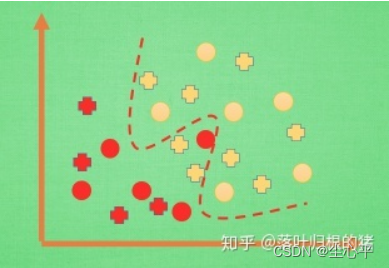
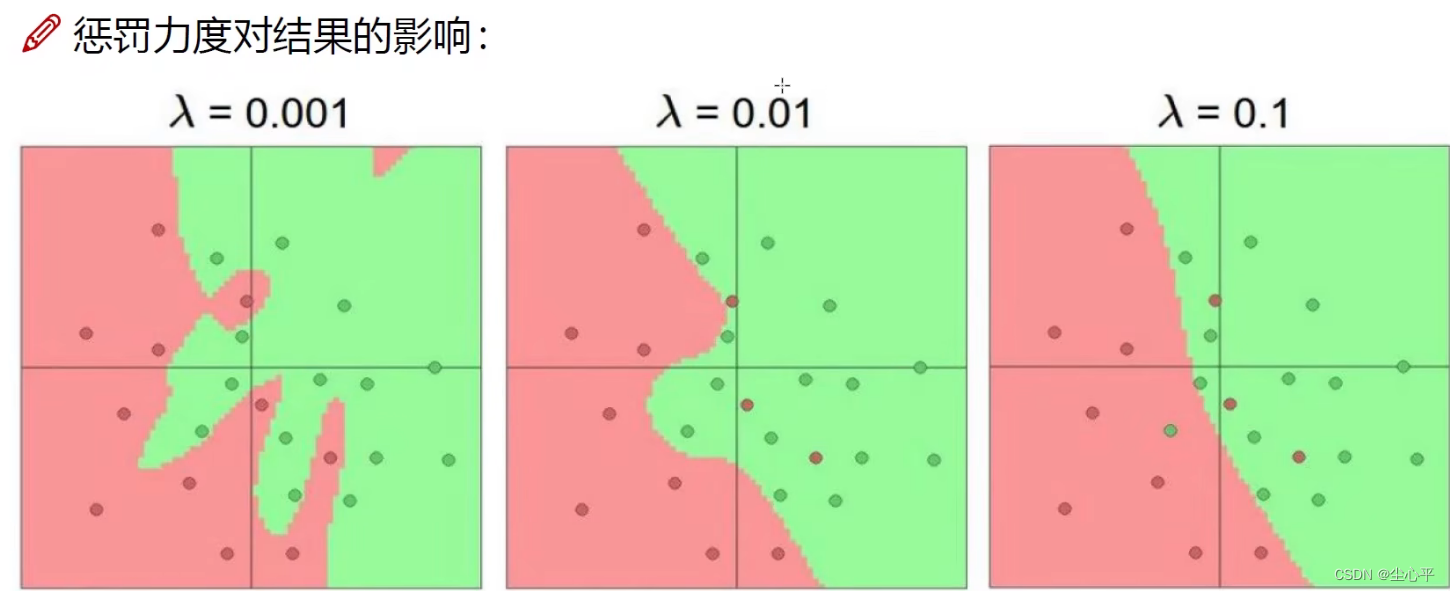
 L2:
L2: 
